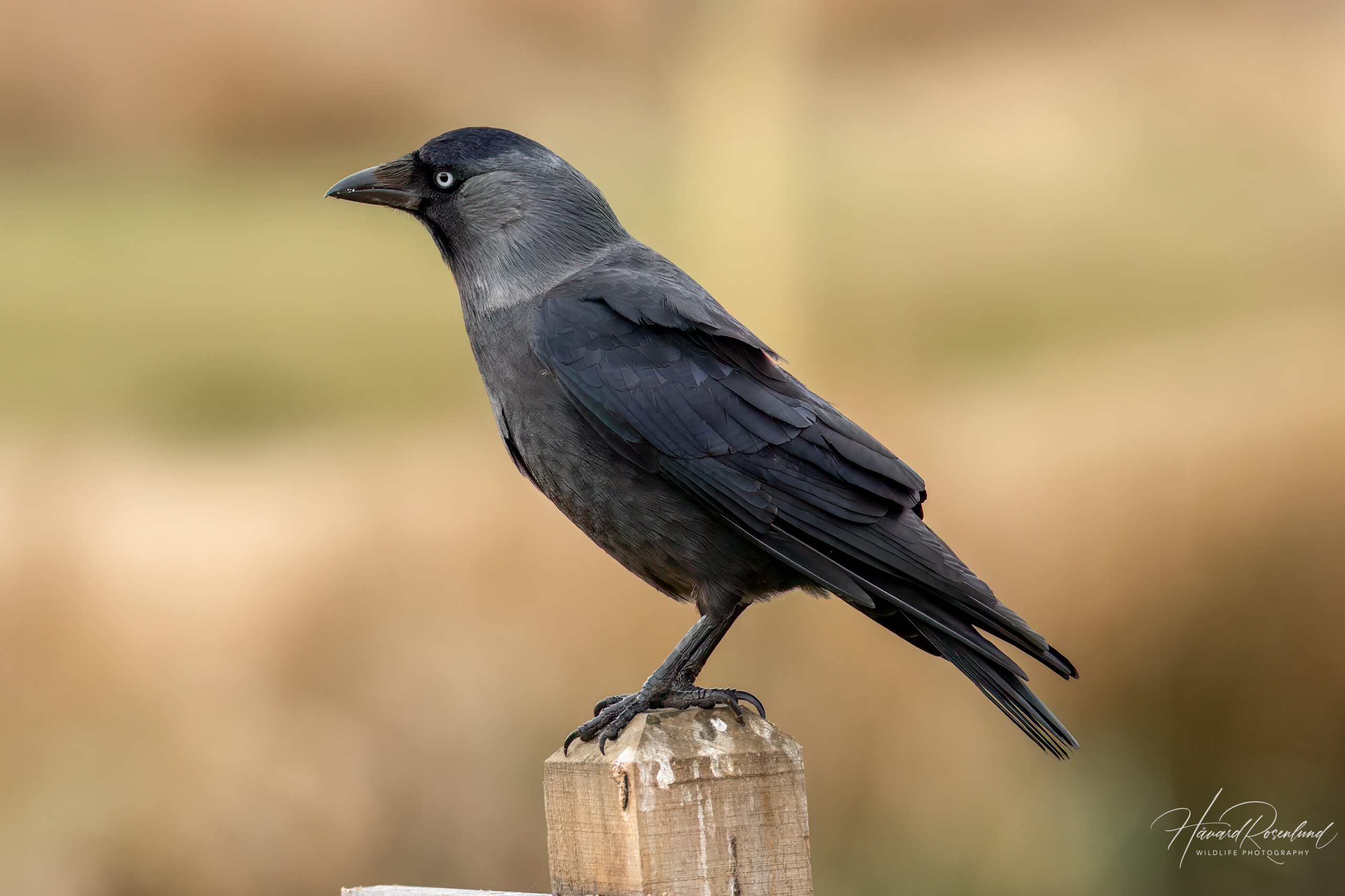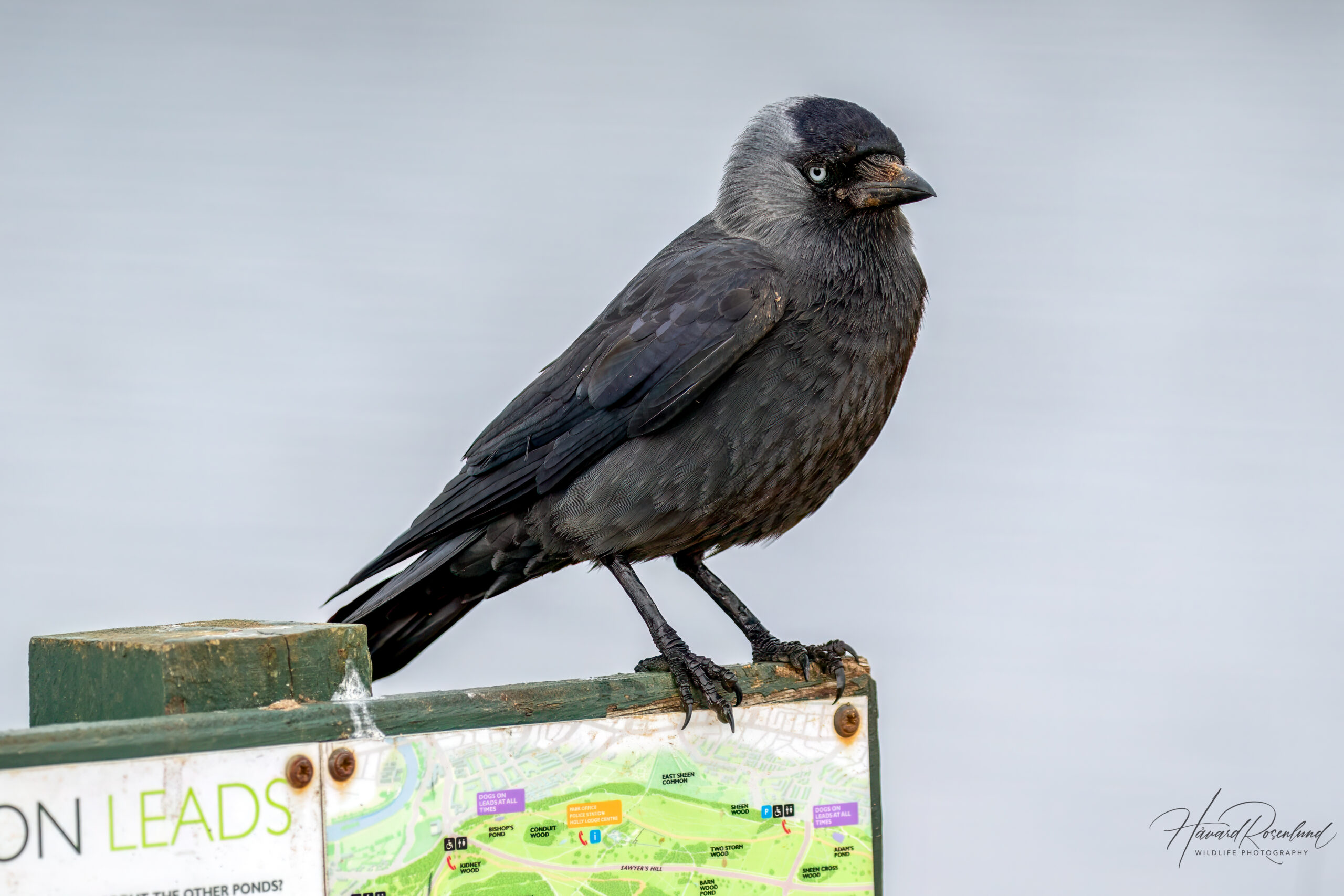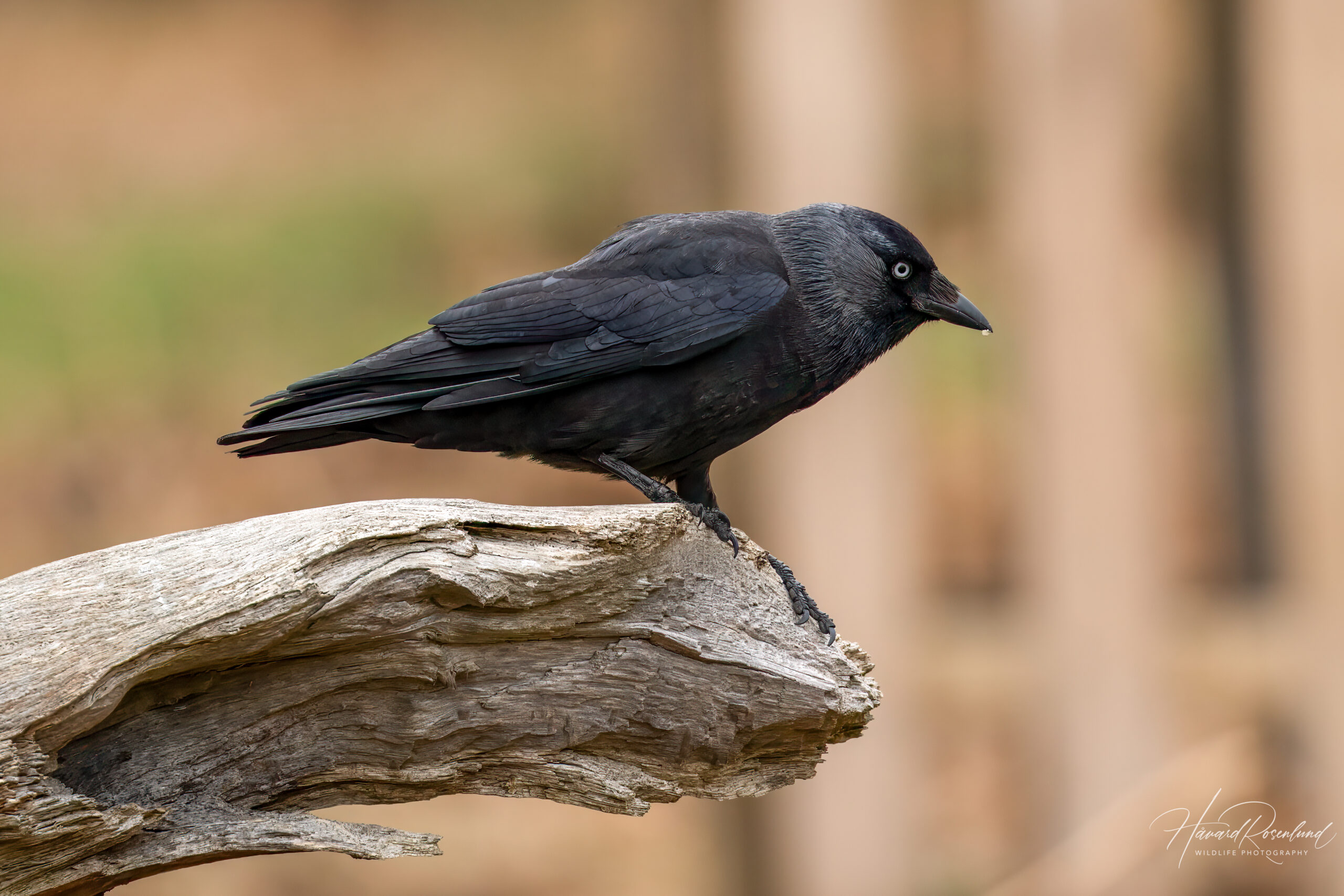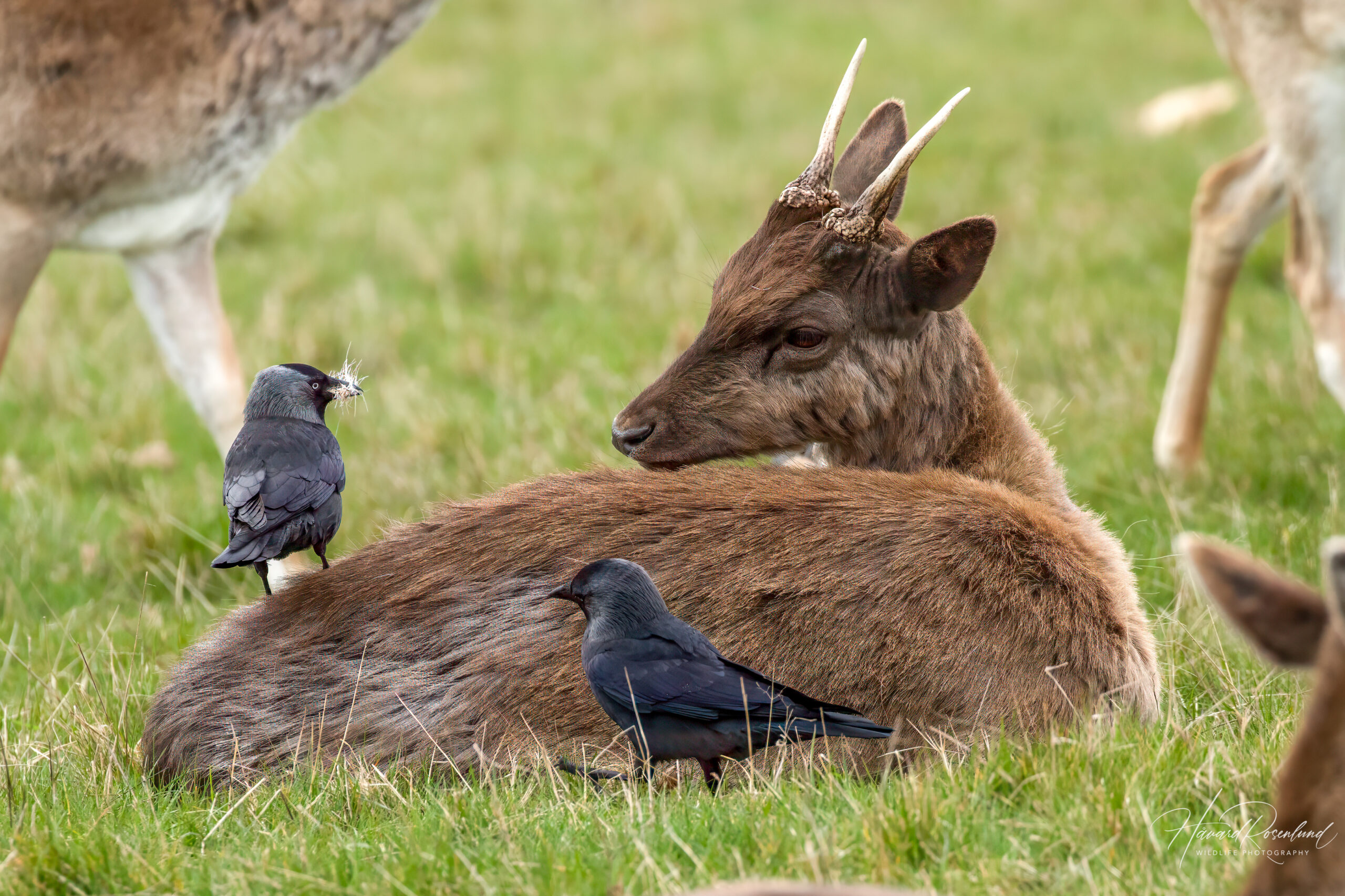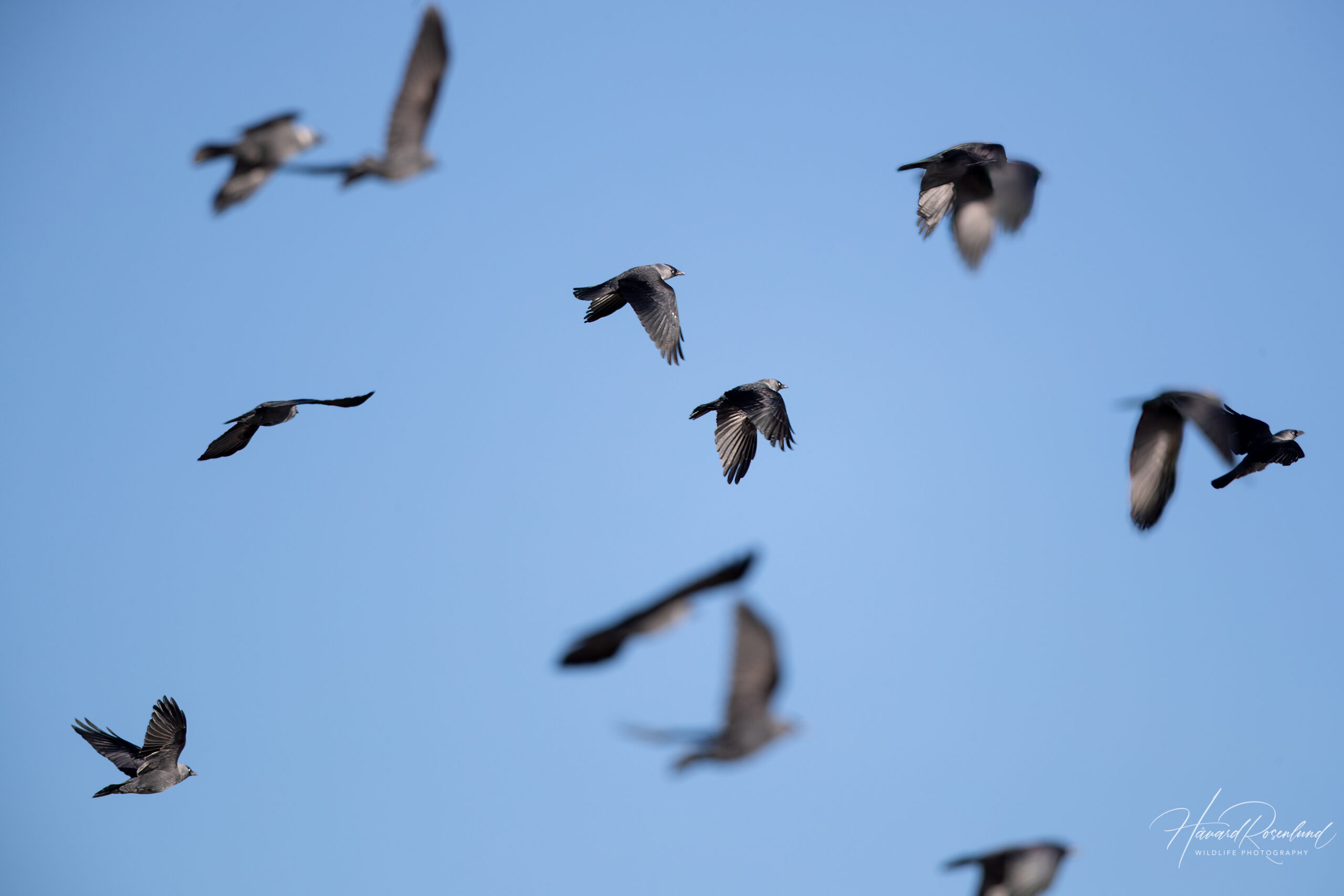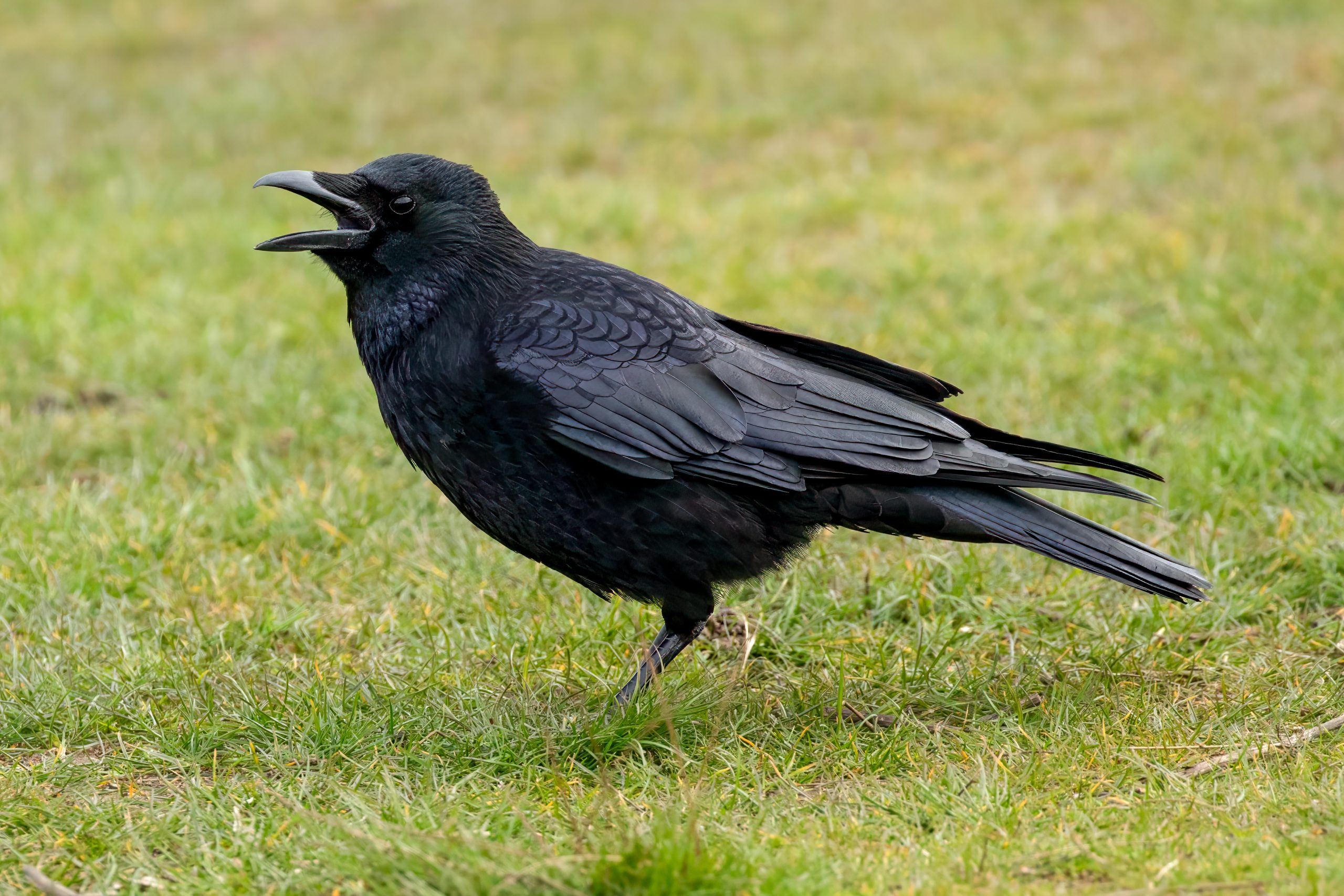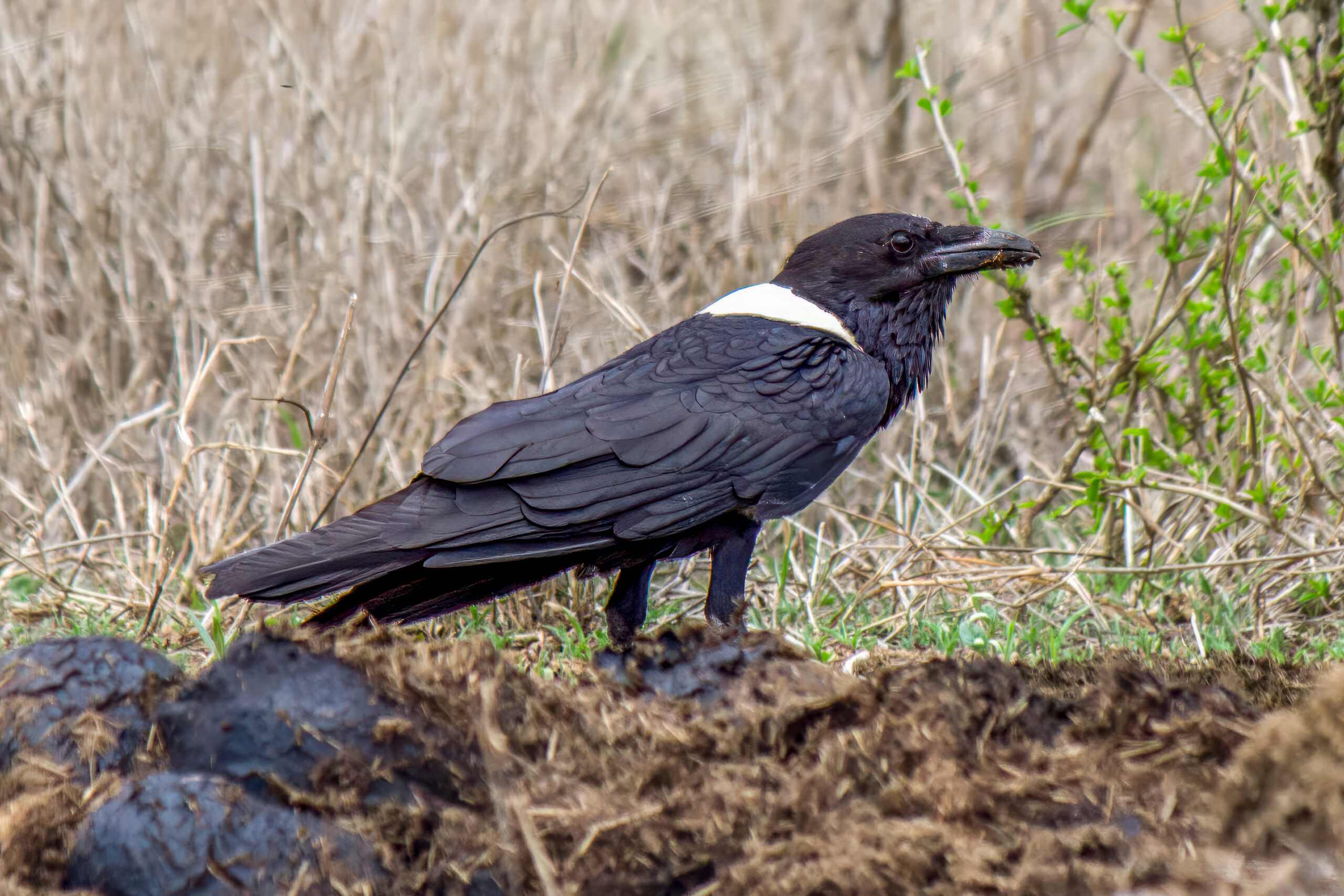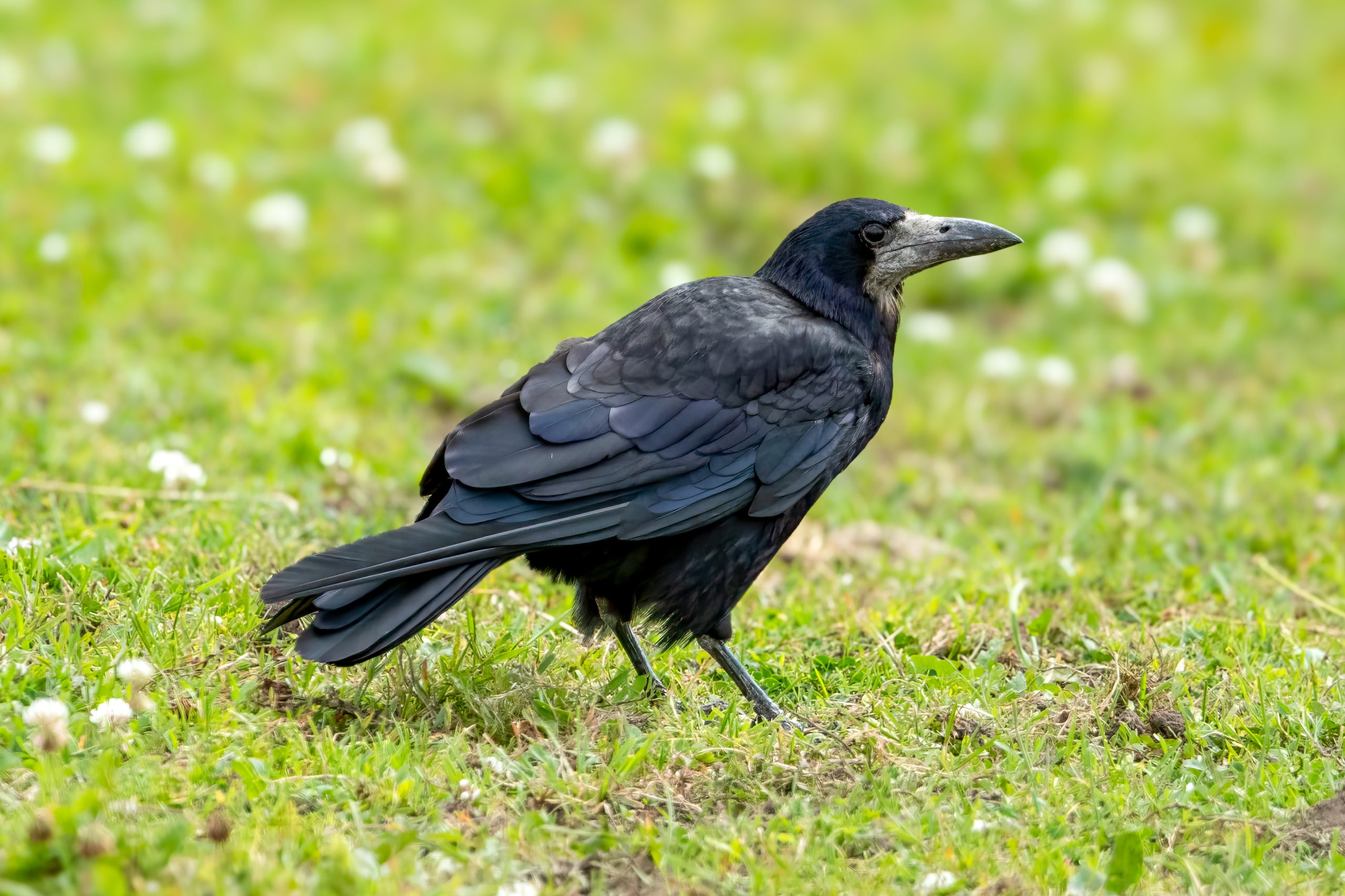Description
The Eurasian jackdaw (Coloeus monedula), also known as the western jackdaw, is a close relative of the crows from Europe and Central Asia, and is by many placed within the same genus, Corvus, as the crows and ravens. It measures approximately 34-39 cm (13.4-15.4 in) in length, with a wingspan of 67-74 cm (26-29 in). Its plumage is predominantly black, with a notable grey nape and sides of the neck which contrast sharply with its darker head and body. This coloration distinguishes it from similar species, such as the hooded crow (Corvus cornix) or the carrion crow (Corvus corone). The crows also have much larger body sizes and different beak shapes. The jackdaw’s compact size, light grey eyes, and distinctive call, a clear ‘chack-chack’, further help in its identification.
Diet & habitat
Eurasian jackdaws are versatile in their diet, feeding on a mix of seeds, insects, fruits, and occasionally small rodents or young birds, showcasing their adaptability. They are known for their intelligence in food gathering, often using tools or teamwork to access food. Their habitats are equally varied, including open woodlands, farmlands, urban areas, and even historical ruins.
Social Behavior
Jackdaws are highly social birds, often seen in pairs or small groups and sometimes joining larger flocks. They exhibit complex social behaviors, including strong pair bonds and a hierarchy within flocks. Research has shown that jackdaws can communicate with their eyes, using the bright white eye ring to signal alertness to other members of their flock. Their intelligence is notable, with the ability to recognize individual human faces, understand the concept of ‘same and different,’ and solve problems, which highlights their cognitive abilities on par with larger corvids. They are also capable of mimicking human speech, much like their crow relatives.
Nesting
The breeding season for Eurasian jackdaws begins in April, with pairs often returning to the same nesting sites year after year. They exhibit monogamous relationships, with both parents involved in nest building, incubation, and feeding of the young. Jackdaws prefer nesting in cavities, often utilizing tree holes, cliffs, and even chimneys, adapting well to human-altered landscapes. Nests are constructed using twigs, hair, and other materials. The female lays 4-6 eggs, which are incubated for about 17-18 days. Chicks are altricial at birth, depending on their parents for food and warmth, and fledge about 30-35 days post-hatching.
Status
The Eurasian jackdaw has a wide range and stable population numbers. However, habitat changes and pesticide use can impact local populations, making ongoing monitoring essential. It is listed as least concern on the IUCN Red List.





